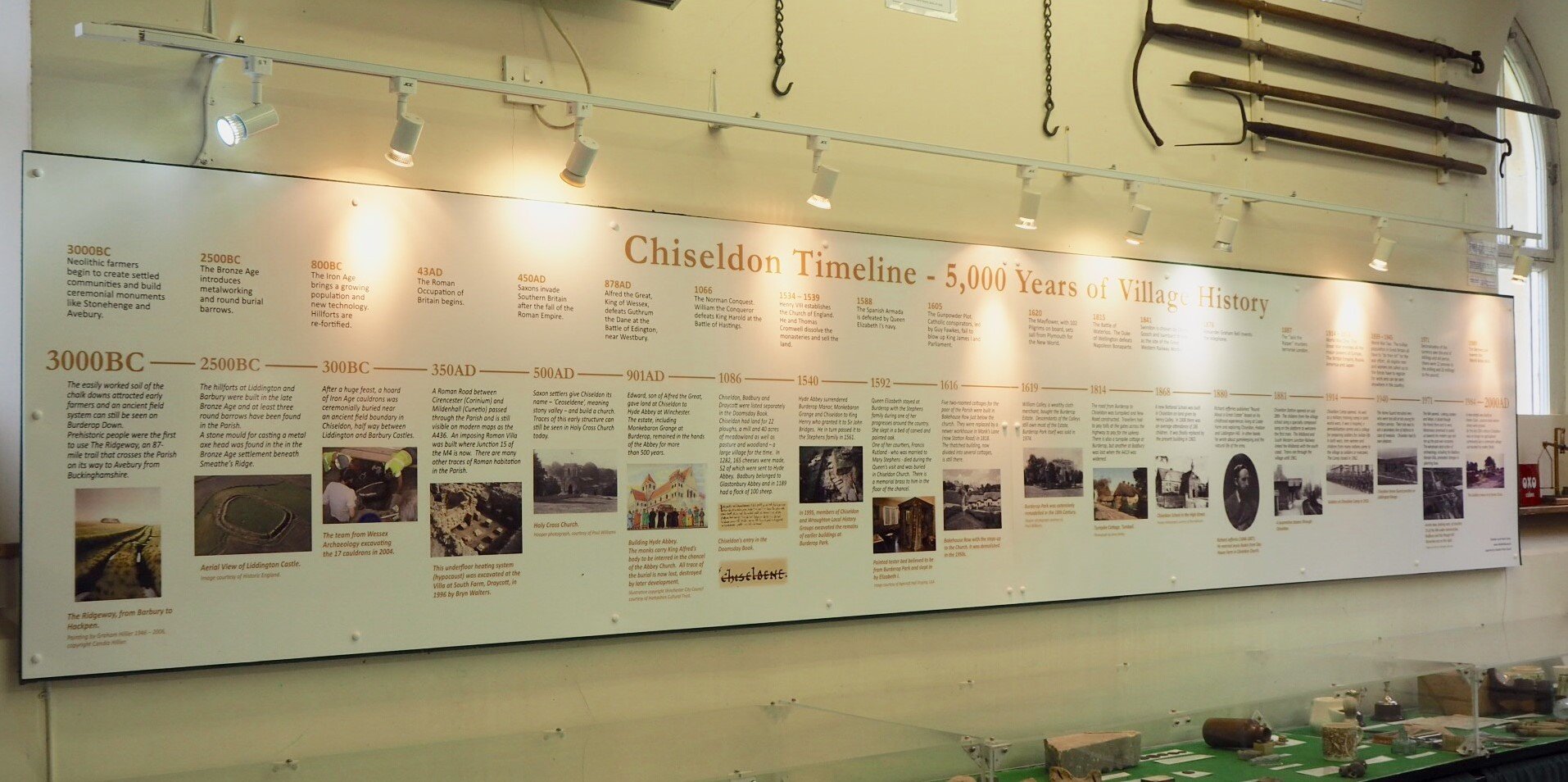Exploring Burderop's Historical Treasures Through Chiseldon History Museum
On a rainy Saturday in August, as the raindrops tapped a rhythmic melody on the leaves of the Bothy Gardens, I found myself seeking shelter and history within the walls of the Chiseldon Museum. Two gracious curators welcomed me and revealed a wealth of information about Burderop Park, the very grounds where our restoration journey has taken root. The museum's exhibit on Burderop Park stretches across an entire wall, a tapestry woven with tales from the estate's past.
The information about Burderop Park results from the dedicated efforts of Walter Ineson (1930-2013), an accountant who worked at Halcrow when it was based at Burderop in the 1970s. During his lunch breaks, Walter would wander the grounds and began to research and gather details about the estate's history. His passion for the estate’s past led him to organize tours and compile a booklet that guided visitors through the site's storied past, including some ghost stories.
The Chiseldon Local History Group, based in the Old Chapel, serves as a haven for preserving the rich heritage of the Parish of Chiseldon. Regular meetings and exhibitions provide a platform to share the objects, stories, and information that shape the area's history. The group's roots trace back to the 1980s when it was formed after a Landscape History Course. This group of enthusiasts transformed their love for the area into a treasure trove of photographs, documents, and artefacts that deserved a home. Thus, Chiseldon Museum opened its doors in August 2004, offering a glimpse into the past and a journey through time.
Among the gems within the museum, Walter's contributions stand out prominently. He wasn't merely an accountant but a dedicated researcher, delving into the annals of Burderop's history. From the initial name of Burythorpe to the remains of a 14th-century Monastic grange, his work uncovered layers of stories beneath the surface—the Calley family, Major General T.P.C Calley and his wife, Emily, Joan Calley, the last Calley to reside in the main house, found a place on the museum walls. Posters reveal insights into the ravine, the stream, trout pounds, and the dedicated staff who contributed to Burderop Park's legacy from 1900-1950.
This image is a reconstruction of a Monastic Grange at Comnor, Oxford
Miss Joan Calley 1950
Cutting Hay 1924
General Calley and aide
B.P. Staff 1900
Jack Jones-Games Keeper 1948
And then, as I read about the American Military base and hospital that once occupied the land, I couldn't help but reflect on the continuity of history. The echoes of the past resonate through time, connecting our present endeavours to those who walked these grounds before us.
Wiltshire Yeomanry Camp 1904
U.S. Hospital: between 1942-1945, it treated 3600 War Casualties.
As I left the museum that day, I was even more inspired to uncover more layers of history that have shaped the grounds of Burderop Park. The connection between the past and our present restoration efforts feels tangible, a bridge spanning decades. I am excited to delve deeper into this wellspring of knowledge, learning from the patrons, volunteers, and enthusiasts who frequent the museum. I look forward to tapping into the wealth of information provided by Walter's family, who have entrusted the museum with a precious collection of photographs and insights he diligently gathered during his tenure at Halcrow's. Through these artefacts, stories, and shared memories, I am dedicated to weaving together the fabric of Burderop Park's history and embracing it as an integral part of the Bothy Gardens' ongoing journey.
Just as Walter Ineson walked the grounds during his lunch breaks, and Emily and Joan Calley must have wandered through the grounds and especially the walled garden, I find myself treading in their footsteps, seeking to honour the past as we shape the future of the Bothy Gardens.










